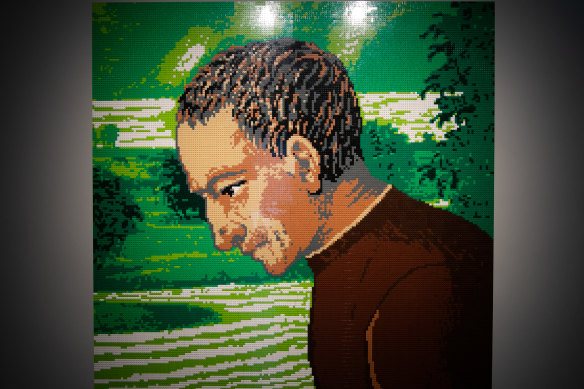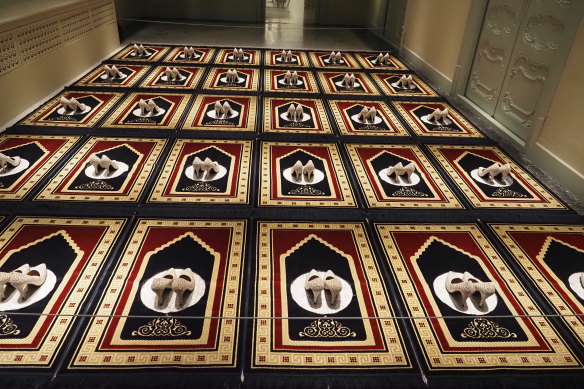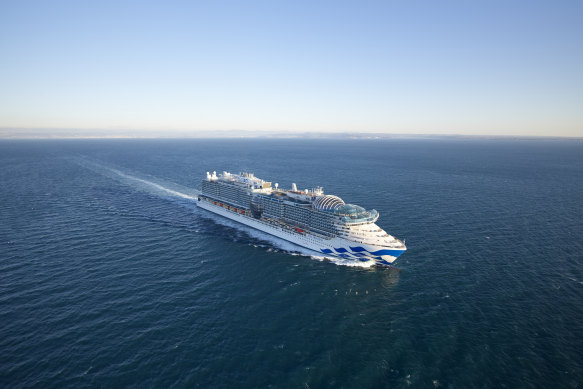The Spanish museum that shouldn’t exist
We disembark in Barcelona, and while some passengers head to the Gaudi House Museum or the Picasso Museum, I have my sights on another – the museum that shouldn’t exist. The one the authorities don’t want us to see.
Housing more than 200 artworks, which have been censored, attacked, denounced or removed from exhibition, the Museu de l’Art Prohibit (Museum of Prohibited Art) is a beacon for creativity and defiance. I can’t get there fast enough.
From the outside, the ornate, five-storey building is typical of the early 20th-century townhouses of Barcelona’s Eixample district. Only a discreet, danger-red sign – Museu de l’Art Prohibit – with a black line through it, hints at the illicit treasures within.

Ai Weiwei’s portrait Filippo Strozzi in Lego (2016).
Inside, the collection brings together paintings, photographs, sculptures, engravings and audiovisual pieces from the 18th to 21st centuries. While some works are by iconic artists such as Pablo Picasso and Gustav Klimt, and others by activists such as Banksy and Ai Weiwei, all invite the viewer to condemn injustices that exist in the world. And to defend the arts against censorship.
Billed as the only museum in the world exclusively dedicated to art that has been censored, the collection, which was initiated by Catalan journalist and entrepreneur Tatxo Benet, opened in late 2023.
I start with French-Algerian artist Zoulikha Bouabdellah’s installation of 30 modified prayer rugs, the cut-out circles and gilded stilettos sending a message about the role of Muslim women and cultural identity. Titled Silence Rouge et Bleu (2014) it was shown in Clichy, France, but later removed by the artist herself when the town council feared violent reactions to the artwork.

The installation by French-Algerian artist Zoulikha Bouabdellah – Silence Rouge et Bleu (2014).
Not so easily censored was the US-based, Australian artist Illma Gore, who, in 2016 posted Make America Great Again, an unflattering illustration of a naked Donald Trump with a noticeably small penis, on her Facebook page. After receiving death threats and risking prosecution, the artist gave the one-finger salute to suppression and turned the portrait into a 3D painting. I cannot unsee the sight of a naked Trump doing pirouettes in life-like 3D.
Ai Weiwei’s portrait Filippo Strozzi in Lego (2016) is an eye-catching composition of Lego pieces depicting a political dissident from the Renaissance era who was persecuted for his ideas. When Lego refused to supply a bulk order to the artist, alleging that it did not want to “participate in political initiatives”, Ai appealed to the public to donate pieces of Lego so he could finish the works.
Gustav Klimt’s Floating nude with arms outstretched (study for “Medicine”) was a preparatory sketch he made in 1897 for a government commission to paint on the ceiling of the University of Vienna. Labelled pornographic, it raised the ire of no less than 87 professors.
Religion, war and capitalism are common themes, from Argentinian Leon Ferrari’s 1965 image of Jesus crucified on the wings of a US fighter plane to Finnish artist Jani Leinonen’s McJesus (2016), a provocative commentary on consumerism depicted by a crucified Ronald McDonald. Exhibited at Israel’s Haifa Museum of Art in 2019, McJesus was removed after the museum was firebombed during protests due to its presence.
Banksy’s Smiling Copper (2003) is part of a series of portraits of heavily armed police officers, each with a smiley face. The street artist’s statement about police abuse and the threats hiding behind a smiling face remind the viewer to be sceptical of those with too much authority or power.
While many of the works are challenging, such as Zoya Falkova’s Evermust (2017), which shows a boxer’s punching bag in the shape of a woman’s torso, others, such as Eugenio Merino’s Always Franco (2012), a life-like sculpture of former Spanish dictator Francisco Franco stooped inside a fridge is comic genius. All elicit a response. All are a triumph of freedom of expression.
In today’s world, this is more important than ever.
THE DETAILS
SEE + DO
Museu de l’Art Prohibit is open six days (closed on Tuesdays). Entry for children under 13 is not recommended. See museuartprohibit.org

The Sun Princess at sea.
CRUISE
Fares for a Cabana mini-suite on a seven-night Mediterranean voyage, departing Barcelona on June 7, 2025, visiting France and Italy, and finishing in Naples cost from $3759 per guest on a Princess Premier package which includes Wi-Fi (up to four devices per guest), premier beverage package, two speciality dining meals and unlimited fitness classes. See princess.com/sun-princess
FLY
Qatar Airways operates multiple daily flights out of Australia, connecting through Doha to Barcelona. See qatarairways.com
Kerry van der Jagt was a guest of Catalan Tourist Board (catalunya.com) and Princess Cruises.
Sign up for the Traveller Deals newsletter
Get exclusive travel deals delivered straight to your inbox. Sign up now.